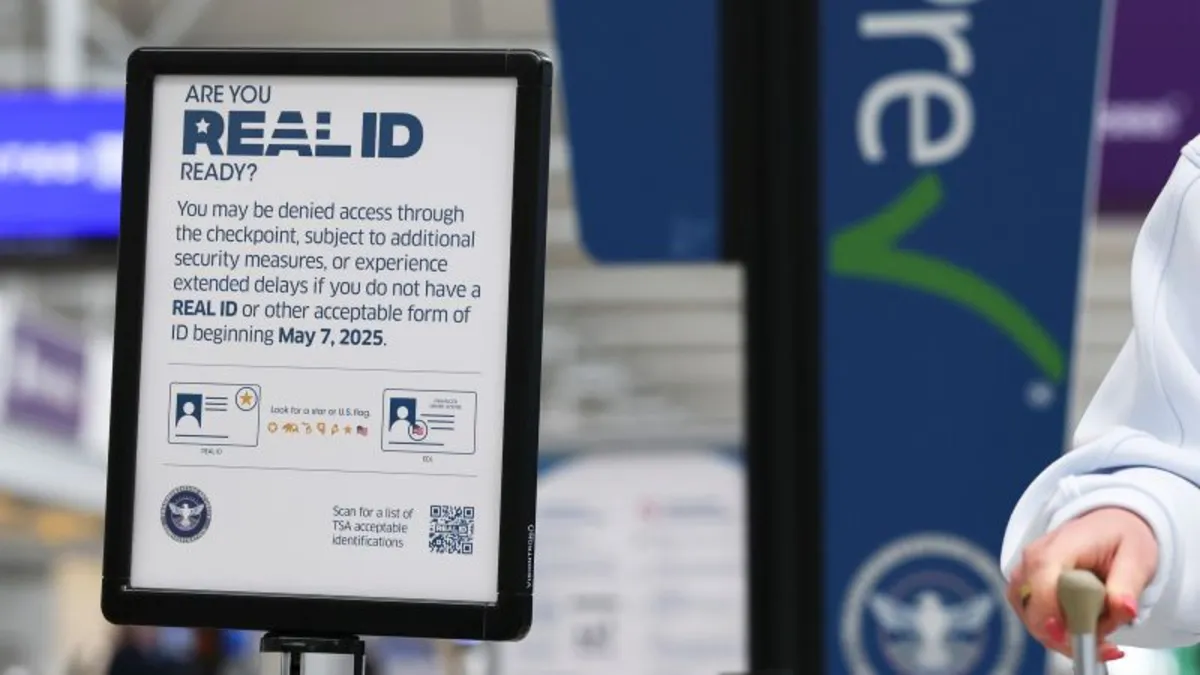
The time has come for travelers across the United States. Starting Wednesday, passengers must present a state-issued ID or license that is compliant with the REAL ID standards to board domestic flights. These identification cards are not only essential for flying but are also federally compliant, allowing access to secure federal facilities. A distinguishing feature of REAL IDs is the star symbol located in the upper right-hand corner, indicating compliance, regardless of which state issued the ID.
The Transportation Security Administration (TSA) has clarified that state-issued driver’s licenses and IDs that do not meet REAL ID compliance will no longer be accepted as valid forms of identification at airports. However, passengers arriving at the airport without a REAL ID on Wednesday will still be allowed to fly, though they may face additional screening procedures, officials have indicated. Those without a REAL ID should be aware of other acceptable forms of identification they can present during the security check.
It's important to note that Wednesday marks the enforcement date for the REAL ID requirement, not the deadline for obtaining one. Individuals can still apply for a REAL ID after the enforcement date of May 7. According to Steve Lorincz, the TSA’s deputy executive assistant administrator for security operations, travelers without a REAL ID will not be turned away at airports. “We will process you, and you will not be turned away,” Lorincz reassured in a statement. “It might take some additional time, but we’re going to do it efficiently. We are fully staffed at all locations across the country.”
The enforcement of REAL ID is a significant step stemming from the 2005 REAL ID Act, which implemented recommendations from the 9/11 Commission aimed at enhancing national security standards for identification. This two-decade-old law mandates that state-issued driver’s licenses meet specific federal requirements to be valid for air travel and access to federal facilities. Recent statistics from the TSA indicate that approximately 19% of air travelers currently do not possess a REAL ID, leading to confusion and urgency among many as they prepare for upcoming travel seasons.
As the TSA begins enforcing the REAL ID regulations, travelers are advised to “plan ahead, arrive early, and arrive prepared.” The agency shared this advice on social media platforms, emphasizing that those without a REAL ID may be subject to additional screening, including TSA Pre-Check passengers. To assist travelers, the TSA has created an interactive tool to help individuals determine if they are “REAL ID ready.” Additionally, staff will be present at checkpoints to guide travelers through the security process.
Some airports may implement separate lines for individuals without REAL IDs or other acceptable documentation. A TSA spokesperson has stated that the agency is collaborating with states, airlines, and airports to ensure that enough travelers arrive with the correct identification. “If you don’t have an acceptable form of ID, such as a passport or a REAL ID, give yourself plenty of time when you arrive to ensure you can get through everything from the curb to the gate,” the spokesperson advised. “We’re definitely implementing REAL ID, but nobody’s going to be turned away on Wednesday.”
For adults 18 years and older, presenting valid identification at airport checkpoints is mandatory. Aside from REAL IDs, other acceptable forms of identification include a US passport or passport card, a permanent resident card, a border crossing card, and a Veteran Health Identification Card, among others. Passengers without a valid ID may be required to undergo identity verification. Once their identity is confirmed, they will be allowed to enter the checkpoint, which may involve additional screening processes, as per TSA guidelines.
The requirements for obtaining a REAL ID, including documentation and costs, vary from state to state, as each state has its own system for issuing these IDs. The TSA provides links to each state’s department of motor vehicles (DMV) to assist residents in understanding what is needed to obtain a REAL ID. “DMVs are working diligently to ensure that residents can get their REAL IDs as we move forward,” Lorincz noted. Some states, like California, are extending business hours and offering Saturday appointments to accommodate residents seeking a REAL ID.
In New York, the DMV has reported an increase in office traffic due to the implementation of REAL ID. Oklahoma’s Service Oklahoma website encourages residents to apply for a REAL ID at least four weeks in advance, as the TSA does not accept temporary paper IDs and notes that IDs are typically mailed within one to two weeks following a visit.
As the enforcement of REAL ID requirements takes effect, travelers are urged to remain informed and prepared for their upcoming journeys. Understanding the changes and requirements can help ensure a smoother travel experience.